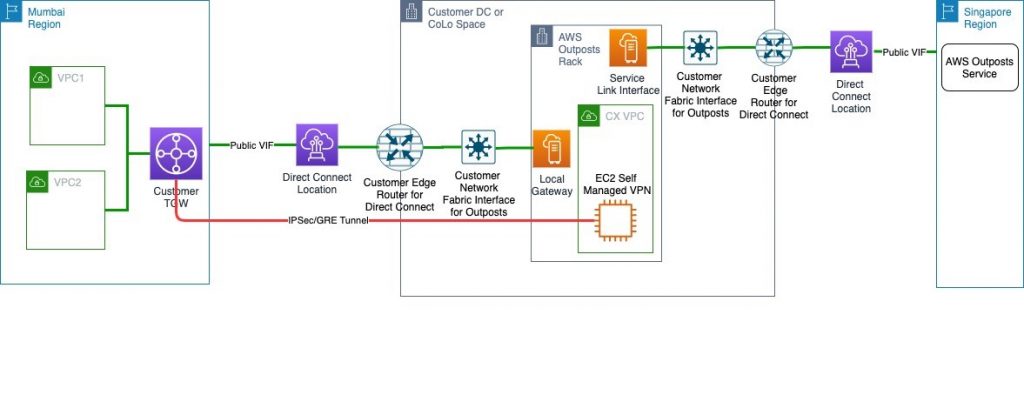AWS Architecture Blog
Category: Migration & Transfer Services
Field Notes: How Sportradar Accelerated Data Recovery Using AWS Services
This post was co-written by Mithil Prasad, AWS Senior Customer Solutions Manager, Patrick Gryczka, AWS Solutions Architect, Ben Burdsall, CTO at Sportradar and Justin Shreve, Director of Engineering at Sportradar. Ransomware is a type of malware which encrypts data, effectively locking those affected by it out of their own data and requesting a payment to […]
Managed File Transfer using AWS Transfer Family and Amazon S3
Financial, healthcare, retail and other companies exchange many different types of data. This can include stock information, healthcare claims, and sharing product data files with their partners. These companies need a managed file transfer solution that supports data transformation, and exchange of data over File Transfer Protocol over SSL (FTPS), and Secure File Transfer Protocol (SFTP). […]
Scaling RStudio/Shiny using Serverless Architecture and AWS Fargate
Data scientists use RStudio server as an Integrated Development Environment (IDE) to develop, publish, and share interactive web dashboards built on Shiny Server. Although it is possible to use virtual server infrastructure in the cloud to run R workloads, containerization offers significant operational benefits. Migrating R workloads into a serverless model in AWS, customers can […]
Field Notes: Protecting Domain-Joined Workloads with CloudEndure Disaster Recovery
Co-authored by Daniel Covey, Solutions Architect, at CloudEndure, an AWS Company and Luis Molina, Senior Cloud Architect at AWS. When designing a Disaster Recovery plan, one of the main questions we are asked is how Microsoft Active Directory will be handled during a test or failover scenario. In this blog, we go through some of […]
Field Notes: Setting Up Disaster Recovery in a Different Seismic Zone Using AWS Outposts
Recovering your mission-critical workloads from outages is essential for business continuity and providing services to customers with little or no interruption. That’s why many customers replicate their mission-critical workloads in multiple places using a Disaster Recovery (DR) strategy suited for their needs. With AWS, a customer can achieve this by deploying multi Availability Zone High-Availability […]
Architecting a Data Lake for Higher Education Student Analytics
One of the keys to identifying timely and impactful actions is having enough raw material to work with. However, this up-to-date information typically lives in the databases that sit behind several different applications. One of the first steps to finding data-driven insights is gathering that information into a single store that an analyst can use […]
Field Notes: Requirements for Successfully Installing CloudEndure Migration and CloudEndure Disaster Recovery
Customers have been using CloudEndure Migration and CloudEndure Disaster Recovery to meet business needs for many years. In 2019, CloudEndure was acquired by AWS, and provided the licensing for CloudEndure to all of their users free of charge for migration. During this time, AWS has identified the requirements for replication to complete successfully after initial […]
Field Notes: Building a Disaster Recovery site on AWS for your Azure Workload
Customers running workloads on other clouds, like Azure or GCP, can increase resilience and meet compliance requirements by using AWS as their disaster recovery site. CloudEndure Disaster Recovery provides an easy cross-cloud solution for replicating and recovering workloads from other cloud providers to AWS. It automatically converts your source machines so that they boot and […]
Field Notes: Choosing a Rehost Migration Tool – CloudEndure or AWS SMS
For customers that choose a rehost migration strategy (also known as lift-and-shift) for their large-scale workloads, the recommendation is to select a tool that will orchestrate, automate and schedule the migration with minimum downtime. CloudEndure Migration and AWS Server Migration Service (AWS SMS) are two services provided by AWS that both automate rehost migration, but […]
Optimizing a Lift-and-Shift for Security
This is the third and final blog within a three-part series that examines how to optimize lift-and-shift workloads. A lift-and-shift is a common approach for migrating to AWS, whereby you move a workload from on-prem with little or no modification. This third blog examines how lift-and-shift workloads can benefit from an improved security posture with […]









